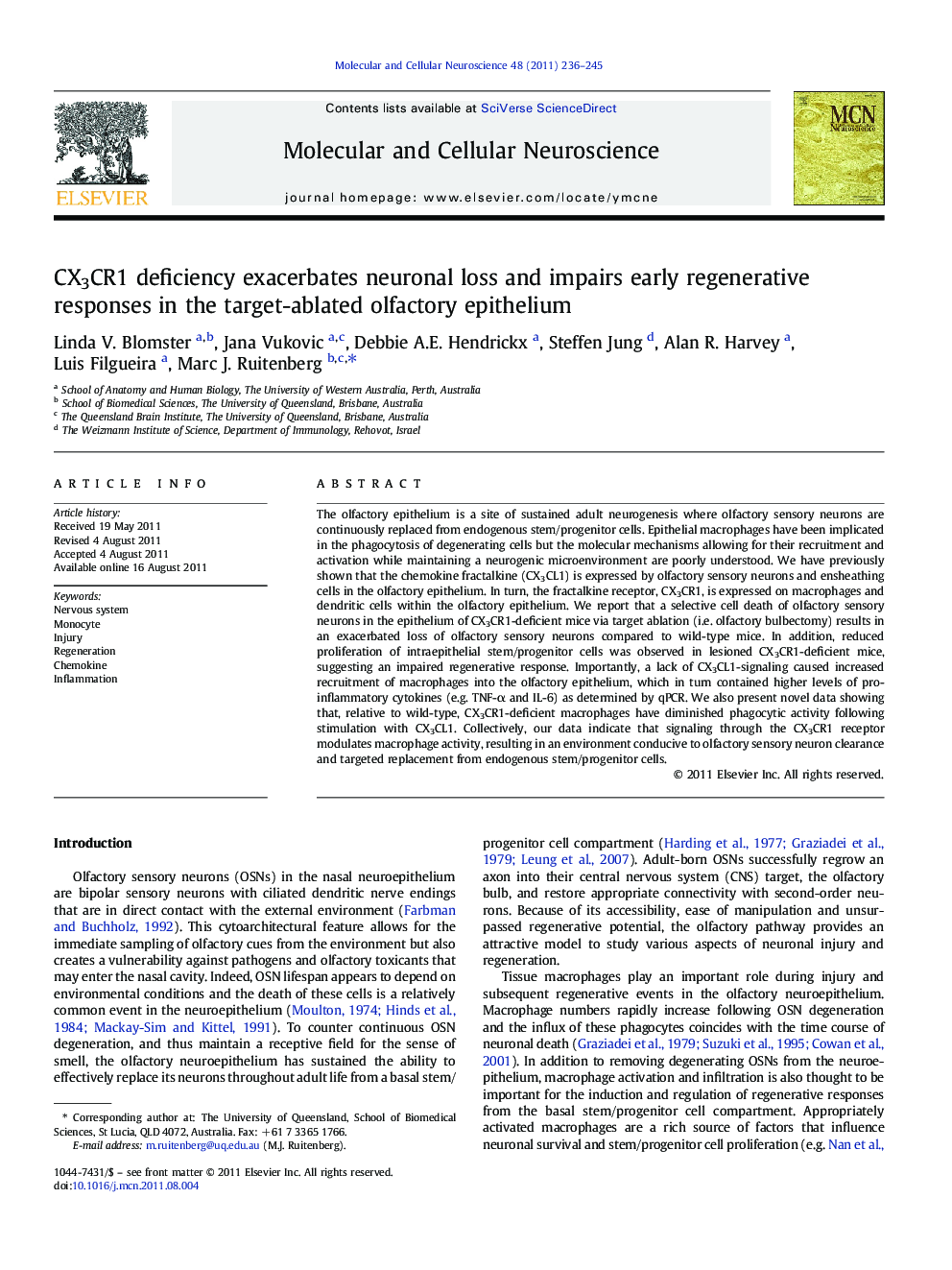| Article ID | Journal | Published Year | Pages | File Type |
|---|---|---|---|---|
| 10956597 | Molecular and Cellular Neuroscience | 2011 | 10 Pages |
Abstract
The olfactory epithelium is a site of sustained adult neurogenesis where olfactory sensory neurons are continuously replaced from endogenous stem/progenitor cells. Epithelial macrophages have been implicated in the phagocytosis of degenerating cells but the molecular mechanisms allowing for their recruitment and activation while maintaining a neurogenic microenvironment are poorly understood. We have previously shown that the chemokine fractalkine (CX3CL1) is expressed by olfactory sensory neurons and ensheathing cells in the olfactory epithelium. In turn, the fractalkine receptor, CX3CR1, is expressed on macrophages and dendritic cells within the olfactory epithelium. We report that a selective cell death of olfactory sensory neurons in the epithelium of CX3CR1-deficient mice via target ablation (i.e. olfactory bulbectomy) results in an exacerbated loss of olfactory sensory neurons compared to wild-type mice. In addition, reduced proliferation of intraepithelial stem/progenitor cells was observed in lesioned CX3CR1-deficient mice, suggesting an impaired regenerative response. Importantly, a lack of CX3CL1-signaling caused increased recruitment of macrophages into the olfactory epithelium, which in turn contained higher levels of pro-inflammatory cytokines (e.g. TNF-α and IL-6) as determined by qPCR. We also present novel data showing that, relative to wild-type, CX3CR1-deficient macrophages have diminished phagocytic activity following stimulation with CX3CL1. Collectively, our data indicate that signaling through the CX3CR1 receptor modulates macrophage activity, resulting in an environment conducive to olfactory sensory neuron clearance and targeted replacement from endogenous stem/progenitor cells.
Related Topics
Life Sciences
Biochemistry, Genetics and Molecular Biology
Cell Biology
Authors
Linda V. Blomster, Jana Vukovic, Debbie A.E. Hendrickx, Steffen Jung, Alan R. Harvey, Luis Filgueira, Marc J. Ruitenberg,
